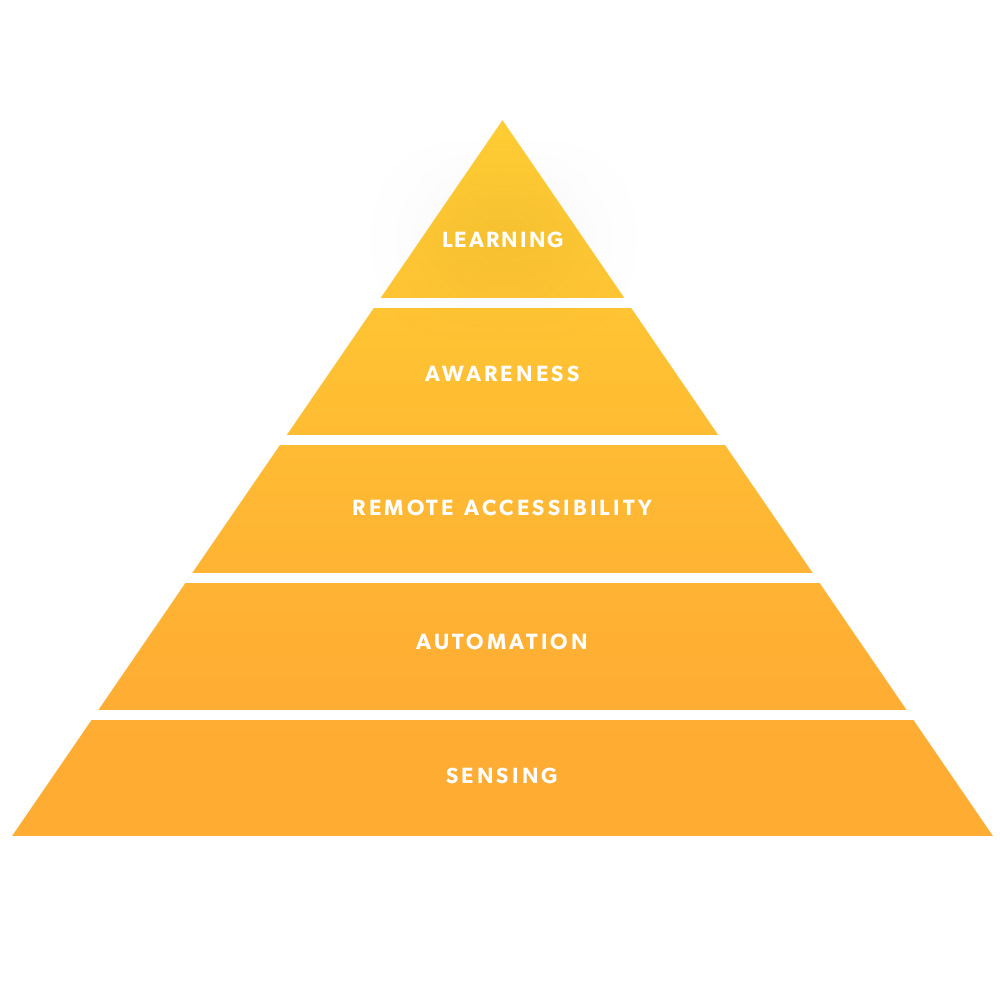The 5 Features That Make Electronic Gadgets “Smart”

While the idea has been around for a while, consumers have been inundated with “smart” gadgets ever since Intel launched their Smart TV initiative in 2010. Smart locks. Smart lights. Smart refrigerators. Smart credit cards. Smart crock pots. Smart band-aids. You get the idea…
“Smart” is a buzzword that gets thrown around so much that the term is often confused with a device being connected to the Internet. But are all “smart” products actually smart?
Five key features make a product smart. The pyramid below illustrates what we believe defines a smart gadget. The features at the base of the pyramid are more common and easier to implement, while those at the top are more complex. Many so-called “smart gadgets” only reach the 2nd or 3rd level.
Sensing
Let’s start at the most basic ingredient: sensors. Before a device can do anything, it needs to have information. All smart devices begin by gathering some form of data — temperature, vibration, movement, video, location, air quality, moisture, etc. This input forms the foundation of a smart gadget and determines what the device is able to do.
Automation
Automation can take many forms. Sometimes the cause and effect happens in the same location: You walk into a room, the lights turns on. It rains for two days, the farm’s irrigation system shuts off. In other cases automation is remote: a device detects motion in Boston and automatically notifies your smartphone in Paris. Generally speaking, automation is the process of a device automatically performing a task based on specific sensor inputs or programmable triggers. It’s like a reflex: if this happens, then do that.
Remote Accessibility
The next level is the ability to access a product remotely via a smartphone, tablet or computer. Track your dog’s steps from the other side of the world. Adjust a thermostat from across town. Check whether dinner is cooked before you leave the office. Remote accessibility allows you to send or receive information without requiring a physical presence.
Sensing, automation, and remote accessibility are the foundational features of a smart device. Unfortunately, that’s also where the intelligence of many so-called “smart devices” ends. A truly smart product goes even further.
Awareness
A device starts getting really smart when it begins to understand and analyze its surroundings. This means the device can sense where it is (e.g. GPS), what devices are nearby (via Wi-Fi, Bluetooth, or other wireless protocols), and/or what is happening around it (e.g. computer vision). For example, a door lock that automatically unlocks when certain people approach, or a motion sensor that is activated by a person but not by a cat. By adding awareness into a remotely accessible and automated device, we begin to see intelligence evolve in exciting new ways.
Learning
Learning devices automatically identify patterns over time, and change how they respond to different triggers or events without being reprogrammed. Ideally this learning makes them more efficient, convenient, and simpler to use over time. For example, an advanced car could learn how you take turns over the first few weeks of driving and adjust the suspension to provide optimal performance. It could also learn the way your spouse drives the car and automatically make similar adjustments when they drive. Likewise, a smart thermostat could save energy by optimizing the heating and cooling of a home based on your behavior patterns.
Putting it all together
To us, the smartest products are the ones that combine all of these features in ways that make our lives easier and better. While there are a lot of products out there that use the smart label as marketing hype, we are most excited and energized by those working toward holistic intelligence. It’s something we’re building into Canary from the start.

1 thought on “The 5 Features That Make Electronic Gadgets “Smart””
You must be logged in to post a comment.